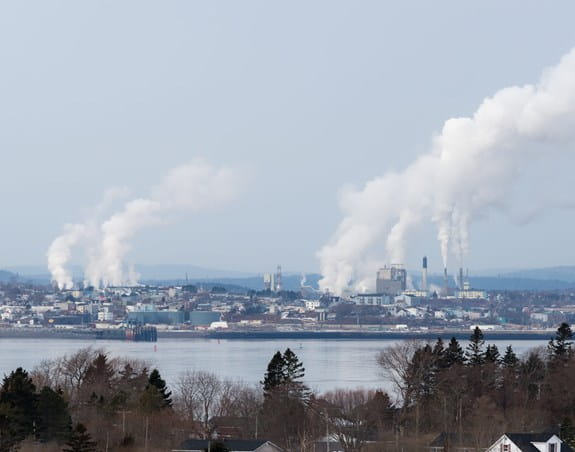Air pollution
What is air pollution – and why is it dangerous?
Air pollution is a mixture of chemicals, particles and other materials in the air in amounts that could damage the environment or harm the health or comfort of humans, animals and plants.
If you already have lung disease or a heart problem, air pollution makes it worse. Air pollution has also been linked to certain cancers.
Outdoor air pollution
The air outside gets polluted in many ways. Sometimes the pollution comes from natural sources, such as forest fires and volcanoes. But more often, people create pollution through activities that send harmful substances into the air. These activities include:
- running gasoline and diesel engines
- generating power (such as smoke from coal-burning power plants)
- industrial manufacturing
- agricultural processes (such as managing soil or raising animals)
- home heating and cooking
Air pollution in your community can be affected by:
- some types of local businesses
- local traffic patterns (vehicle type and how heavy traffic is)
- whether you live in an urban or rural location
- geography (valleys versus plains)
- weather patterns (especially wind direction)

Indoor air pollution
Air inside your home can also be polluted. Major sources of indoor air pollution include:
- second-hand smoke
- radon from the ground
- indoor burning of coal or wood
- chemicals from paint or cleaning products
- biological pollutants that come from living organisms (mould or dust mites)
Air pollution and cancer
Most types of air pollution are a mixture of many harmful substances, including small particles in the air, sulphur oxides, carbon monoxide, nitrogen oxides, volatile organic compounds (VOCs), benzene and polycyclic aromatic hydrocarbons (PAHs).
The International Agency for Research on Cancer (IARC) classifies types of air pollutants based on their link with cancer. For example, gasoline engine exhaust is classified as a possible carcinogen. Radon, diesel engine exhaust and outdoor air pollution are classified as known carcinogens.
IARC has also classified individual parts of air pollution as known carcinogens. These parts include:
- particulate matter
- some volatile organic compounds (such as benzene)
- certain PAHs (such as benzo[a]purene)
Outdoor air pollution causes lung cancer
We know that smoking is the biggest risk factor for lung cancer in Canada. There is now strong evidence that outdoor air pollution also increases lung cancer risk. The more you’re around air pollution, the higher your risk of lung cancer will be. Researchers have also found that radon gas in indoor air can lead to lung cancer.
Research has also found a link between outdoor air pollution and a higher risk of bladder cancer. More research is needed to study the link between cancer and other parts of air pollution.
4 ways to reduce your exposure to air pollution – outside
7 ways to reduce your exposure to air pollution – indoors
Your trusted source for accurate cancer information
With support from readers like you, we can continue to provide the highest quality cancer information for over 100 types of cancer.
We’re here to ensure easy access to accurate cancer information for you and the millions of people who visit this website every year. But we can’t do it alone.
Every donation helps fund reliable cancer information, compassionate support services and the most promising research. Please give today because every contribution counts. Thank you.
